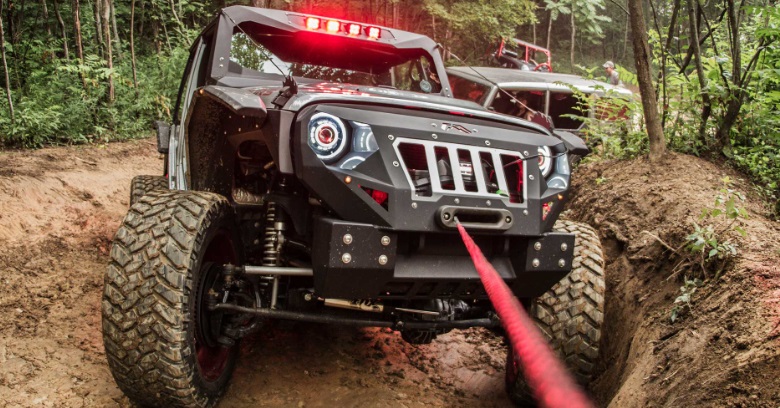Dos and Don’ts of Adding a Winch to Your Off-Road Vehicle

A winch is an important off-roading recovery component that’s good to have on your truck or Jeep if you hit the trails a lot since you never know when you might need it.
There are a lot of great aftermarket winch bumpers you can put on your vehicle to give you a solid foundation for your winch.
Yet where some people run into problems installing their winches is with the electrical hookups as vehicle winches can really strain your electrical system and cause all sorts of problems.
You’ve got to do a correct installation so the winch is reliable when you need it and not cause more problems with your off-roader than you remedy by having the winch in the first place.
Follow these helpful tips to get your winch installed onto your vehicle without a fuss so it’s there when you need it!
Yes – Do This When Adding A Winch To Your Off-Road Vehicle!
1. Always Use the Proper Tools and Supplies
Electrical failures when adding winches to your vehicle are commonly attributed to faulty connections, poor quality parts, and other issues that can be avoided when you use the right tools and electrical items.
Choose marine-grade connectors with heat-shrink tubes to keep the connections clean and dry as well as durable crimp-on or solder-on terminals.
Apply these with the correct tools using the recommended methods to get a solid connection with no damage to any of the parts.
2. Know How to Wire the Your Winch Correctly
To safely transfer power from your vehicle to the winch, it’s essential that you use the gauge or wire recommended by the manufacturer or you could end up with overheating issues.
If possible, just use the wiring harness included with the winch. If not and you need to rewire yours, choose strictly automotive wire in the same gauge as the wiring harness, as this size was already chosen for its ability to handle the power draw.
3. Always Use the Right Size Fuse
A fuse that’s too small will blow more than it needs to and not allow you to get productive use from your vehicle’s winch.
A fuse that’s too big won’t blow soon enough and could allow the wires to overheat and melt if there’s too much draw on them.
Stick with the fuse that comes with your winch and if you need to replace it, do so with the same size.
4. Keep Wires Securely Affixed
Use wire clamps, grommets, or tie-wraps to keep your wiring secured in the engine compartment so they don’t move around and potentially weakening them or the wire connections or get caught on something as you work under the hood.
5. Always Double-Check the Grounds
Keep them clean and corrosion-free for uninterrupted use of your winch.
If you experience issues using it, first check to make sure the winch is properly grounded as this causes most of the electrical problems that people have with their winches.
No – Don’t Do This When Installing Your Winch!
1. Overload Your Winch Electrical Circuit
Avoid using any parts that are not designed for automotive use or to handle the electrical load your winch will put on it as you could short out your electrical system and potentially cause significant damage.
If it is necessary, add a switch system or a trigger device that can handle power surges while your winch is in use.
2. Leave Any Wires Unprotected
Unprotected wires can very easily be damaged within the engine compartment if they drag across sharp edges, lay over sources of heat, or come in contact with parts that rotate.
They are also more susceptible to corrosion.
3. Wrap Wires Around the Battery Terminal
It’s never a good idea to wrap wires around your battery terminal, especially if they’re bare wires.
Doing so invites loosening, electrical shorts, and in worst cases, electrical fires.
4. Don’t Avoid Getting Help
If you need some help mounting and connecting your new winch, seek it.
You’ll avoid lots of frustration, plus any possible damage to your winch or vehicle if things aren’t done correctly.
Ready to Add That Winch?
Most of the above pointers are basic common sense that stresses the importance of following directions and connecting vehicle electrical the way they were designed to be connected.
Done wrong, you’re putting your vehicle, as well as yourself in danger in many ways.
Done well, you’ll have a safe, powerful, and dependable winch on your bumper that’s at your disposal whenever you need it and without putting excess strain on your vehicle’s electrical system!